If you’re looking for a fun and delicious way to use your sourdough discard, this Sourdough Donuts Recipe is just what you need! These homemade donuts are light, fluffy, and packed with incredible flavor, thanks to a slow fermentation process that enhances their texture and taste. Unlike store-bought versions, these donuts have a depth of flavor that only sourdough can bring, making them the ultimate homemade dessert. Whether you enjoy them plain, coated in cinnamon sugar, or drizzled with a sweet glaze, this recipe will quickly become a favorite in your kitchen. Get ready to treat yourself to bakery-quality sourdough donuts, made right at home!

Why You’ll Love This Sourdough Donuts Recipe
This Sourdough Donuts Recipe is the perfect way to use up sourdough discard while creating an irresistibly delicious treat. The long fermentation process enhances the flavor, giving these donuts a deep, complex taste and improved digestibility. With a soft, fluffy texture and a slight chew, they’re far superior to anything store-bought.
Plus, they’re incredibly versatile—glaze them, fill them, or coat them in cinnamon sugar for a treat that suits your cravings. Whether enjoyed as a cozy morning indulgence with coffee or a delightful homemade dessert, these sourdough donuts are sure to become a favorite!
Jump to:
Ingredients
For the Donut Dough:
- Active sourdough starter (or discard)
- Warm milk (about 95°F/35°C)
- Granulated sugar
- Unsalted butter, melted
- Large eggs, room temperature
- Vanilla extract
- All-purpose flour
- Salt
- Ground nutmeg (optional)
- Vegetable oil for frying
For the Classic Vanilla Glaze:
- Powdered sugar
- Whole milk
- Vanilla extract
- Pinch of salt
For the Chocolate Glaze:
- Powdered sugar
- Whole milk
- Unsweetened cocoa powder
- Vanilla extract
- Pinch of salt
For Cinnamon Sugar Coating:
- Granulated sugar
- Ground cinnamon
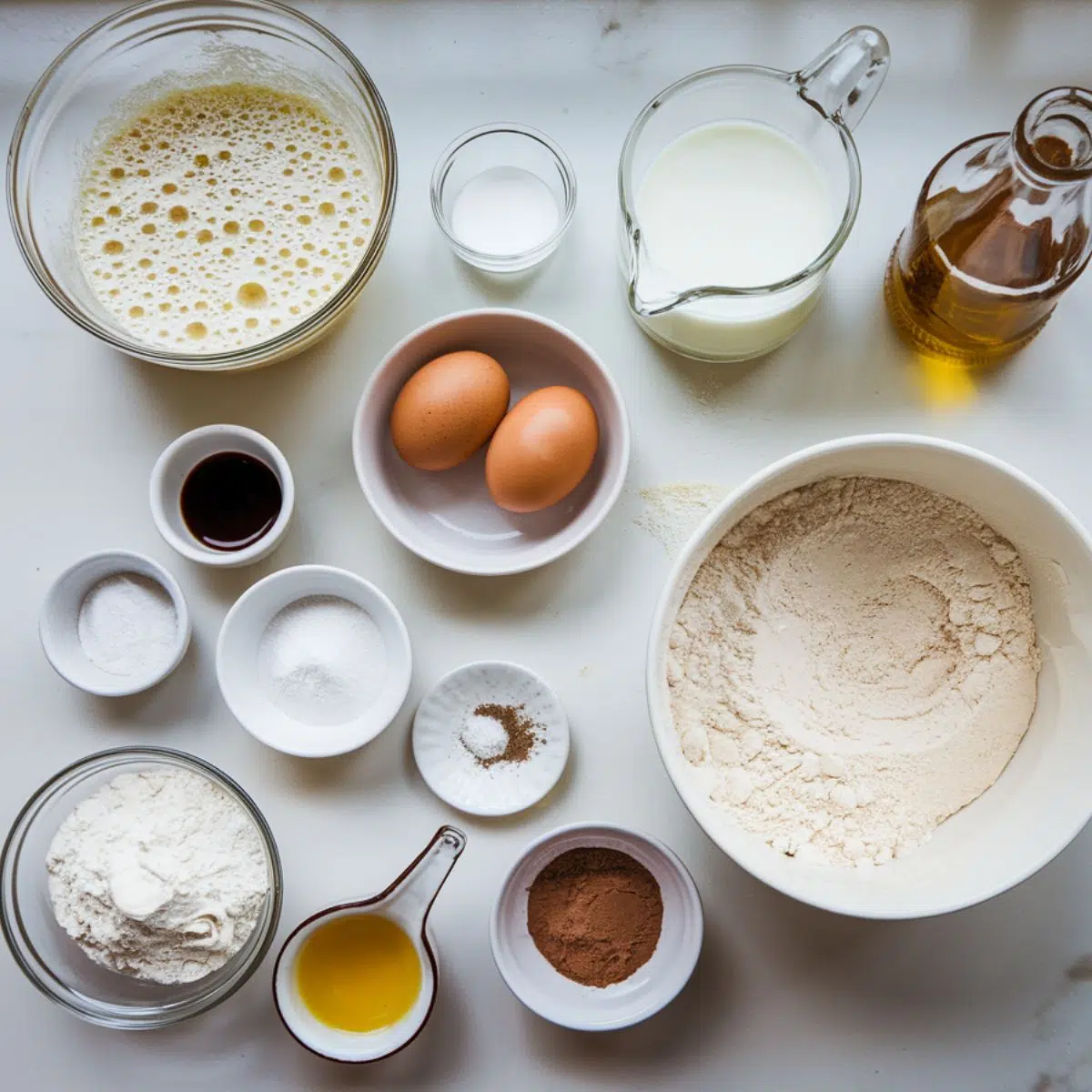
See recipe card for quantities.
Instructions
Day 1: Prepare the Dough (Evening)
- Mix the wet ingredients: In the bowl of a stand mixer fitted with the dough hook, combine the sourdough starter, warm milk, sugar, melted butter, eggs, and vanilla extract. Mix on low speed until well combined.
- Add dry ingredients: Gradually add the flour, salt, and nutmeg (if using) to the wet ingredients. Mix on low speed until just combined, then increase to medium speed and knead for 5-6 minutes until the dough is smooth and elastic. It should be soft and slightly tacky but not sticky.
- First rise: Transfer the dough to a lightly greased bowl, cover with plastic wrap or a damp towel, and let it rise at room temperature for 2 hours.
- Refrigerate overnight: After the initial rise, punch down the dough gently, recover, and refrigerate overnight (8-12 hours). This slow fermentation develops the sourdough flavor and improves texture.
Day 2: Shape, Proof, and Fry
- Roll out the dough: Remove the dough from the refrigerator and let it sit at room temperature for 30 minutes. On a lightly floured surface, roll the dough to about ½-inch (1.25cm) thickness.
- Cut the donuts: Using a 3-inch (7.5cm) round cutter, cut out circles of dough. Then use a 1-inch (2.5cm) cutter to cut out the holes. Place the cut donuts and holes on parchment-lined baking sheets, leaving about 2 inches between each.
- Second proof: Cover the donuts loosely with a clean kitchen towel and let them proof at room temperature for 1-2 hours, or until they look puffy and have increased in size by about 50%.
- Prepare for frying: About 30 minutes before you're ready to fry, heat the oil in a heavy-bottomed pot or Dutch oven to 350°F (175°C). Use a candy thermometer to maintain the correct temperature.
- Fry the donuts: Carefully lower 2-3 donuts into the hot oil using a slotted spoon or spider strainer. Fry for about 1-2 minutes per side until golden brown. The donut holes will take less time, about 1 minute total.
- Drain and cool: Remove the donuts with the slotted spoon and place them on a cooling rack lined with paper towels to drain excess oil. Let them cool slightly before glazing.
Prepare the Glazes and Toppings
- Vanilla glaze: In a medium bowl, whisk together the powdered sugar, milk, vanilla extract, and salt until smooth. Add more milk if needed to reach desired consistency.
- Chocolate glaze: In a medium bowl, whisk together the powdered sugar, milk, cocoa powder, vanilla extract, and salt until smooth.
- Cinnamon sugar: In a shallow bowl, mix together the granulated sugar and cinnamon.
Finish the Sourdough Donuts
- For glazed donuts: Dip the top of each slightly cooled donut into the glaze, allowing excess to drip off. Return to the cooling rack and let the glaze set, about 10-15 minutes.
- For cinnamon sugar donuts: While the donuts are still warm (but not hot), toss them in the cinnamon sugar mixture until fully coated.

- Step 1:Prepare the Dough (Evening)
Mix and knead the dough until smooth, then let it rest at room temperature. Refrigerate overnight to develop flavor and create a soft, airy texture.
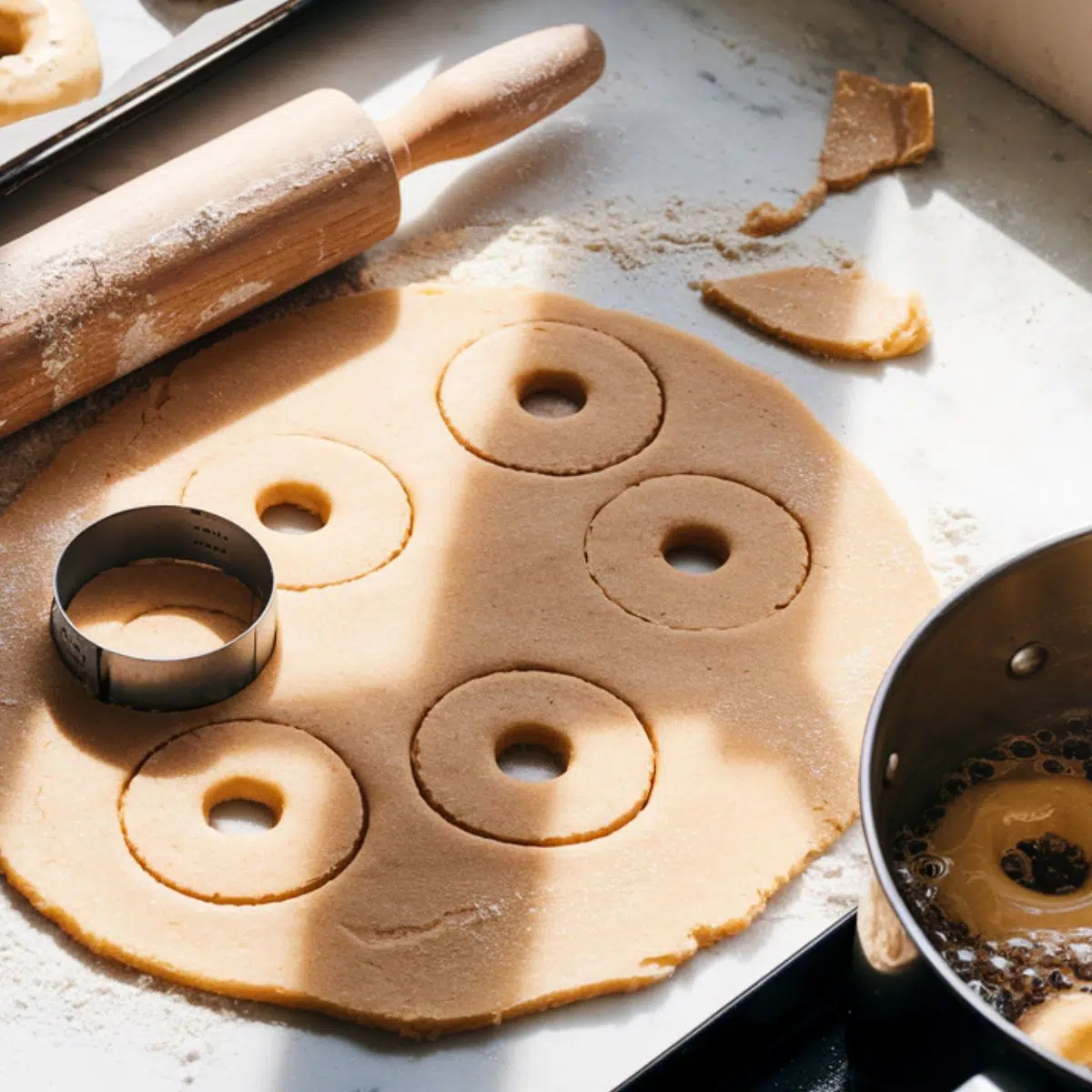
- Step 2:Shape, Proof, and Fry
Roll out the dough, cut into donut shapes, and let them proof until puffy. Fry until golden brown for a crisp crust and fluffy interior.

- Step 3:Prepare the Glazes and Toppings
Whisk together vanilla and chocolate glazes, and mix cinnamon sugar. These toppings add sweetness and enhance the sourdough flavor.

- Step 4:Finish the Sourdough Donuts
Dip the warm donuts in glaze or roll them in cinnamon sugar. Let them set before enjoying fresh, soft, and perfectly sweet treats.
Tips for Success :
- Test with a donut hole: Fry a donut hole first to check if the oil is at the right temperature and if the donuts are proofed enough.
- Temperature matters: Keep the oil between 350-360°F (175-182°C) for perfectly fried donuts. Too hot and they'll brown too quickly without cooking inside; too cool and they'll absorb too much oil.
- Don't overwork the dough: Mix just until the ingredients are combined and the dough is smooth.
- Patience with proofing: The final proof is crucial for light, fluffy donuts. They should look visibly puffy before frying.
- Maintain your starter: For the best results, use a starter that's been fed within the last 24 hours, though discard will still work!
Equipment Needed
- Stand mixer with dough hook (or large mixing bowl)
- Rolling pin
- 3-inch (7.5cm) round cutter
- 1-inch (2.5cm) round cutter for holes
- Candy thermometer
- Slotted spoon or spider strainer
- Cooling rack
- Baking sheets
- Parchment paper
Storage Instructions
Sourdough donuts are best enjoyed fresh on the day they're made. However, you can store any leftovers in an airtight container at room temperature for 1-2 days. They can also be frozen (unglazed) for up to 1 month - thaw at room temperature and warm slightly before glazing and serving.
Recipe Variations
- Baked Sourdough Donuts – Place the cut donuts on a parchment-lined baking sheet and bake at 375°F (190°C) for 12-15 minutes until golden for a lighter alternative.
- Filled Sourdough Donuts – Skip cutting the holes and fill them with jam, pastry cream, or Nutella for a decadent treat.
- Toppings for Sourdough Donuts – Sprinkle chopped nuts, shredded coconut, or colorful sprinkles on top of the glaze while it’s still wet for extra texture and flavor.
- Flavor Additions to Sourdough Donuts – Add lemon or orange zest to the dough for a refreshing citrus twist.
The Little-Known Secret to Irresistible Sourdough Donuts
What if the secret to the most flavorful, melt-in-your-mouth sourdough donuts wasn’t just in the ingredients—but in time itself? The magic happens in a two-stage fermentation process. First, the dough is left to rise at room temperature, waking up the wild yeasts and developing the first layer of flavor. But the real transformation takes place overnight, as a slow, cold fermentation deepens the taste, creating complex flavor compounds that no store-bought donut could ever match.
There’s another hidden trick—one that gives these donuts an unforgettable flavor. A hint of nutmeg, subtle yet powerful, enhances the traditional donut taste in a way that’s hard to pinpoint but impossible to ignore. It’s that little something extra, the secret ingredient that makes every bite feel like pure nostalgia. Once you try these, you'll never look at a donut the same way again!
FAQ
Is sourdough good for donuts?
Absolutely! Sourdough donuts have a uniquely rich, complex flavor that you won’t find in regular yeasted donuts. The natural fermentation process enhances both taste and texture, creating a light, fluffy interior with a slight chew. Another great benefit is improved digestibility—thanks to fermentation, the flour’s proteins are partially broken down, making them easier on the stomach. Plus, they’re a fantastic way to use up sourdough discard, helping to reduce food waste while treating yourself to an irresistible homemade dessert.
What is the difference between sourdough donuts and regular donuts?
The key difference lies in the leavening process. Sourdough donuts are naturally fermented using a sourdough starter, which develops a deeper, more complex flavor over time. They also tend to have a slightly chewier texture compared to regular donuts, which are made with commercial yeast or baking powder for a quicker rise. Additionally, sourdough donuts require a longer fermentation period, allowing the dough to become more flavorful and easier to digest. While traditional donuts may be faster to make, sourdough donuts offer a bakery-quality experience with a depth of flavor that’s hard to beat.
What not to do with sourdough?
Skipping fermentation – The long rise time is what gives sourdough donuts their unique flavor and light texture. Rushing the process can lead to dense, bland results.
Using an inactive starter – If your starter isn’t bubbly and active, the dough won’t rise properly, resulting in heavy, underdeveloped donuts.
Overproofing the dough – Letting the dough ferment too long can weaken its structure, making it difficult to handle and leading to an overly tangy taste.
Adding too much flour – This can make the donuts dense and dry instead of soft and airy. Always go by texture rather than exact flour measurements.
Neglecting your starter – A well-maintained starter produces better, more flavorful dough. If your starter is weak or hasn’t been fed recently, it won’t give the donuts the rise and structure they need.
What is the secret ingredient in doughnuts?
The secret to truly delicious sourdough donuts lies in both technique and flavor. A touch of nutmeg is often the hidden ingredient that gives classic donuts their nostalgic bakery-style taste. It’s subtle but adds a warm depth that enhances the overall flavor. However, in sourdough donuts, the real magic happens during fermentation. The slow, natural rise develops complex flavor compounds that no artificial ingredient can replicate, making each bite incredibly satisfying. Combined, these elements create donuts that are not just a treat but an experience!
Once You Try These, There's No Going Back
Once you’ve tasted these homemade sourdough donuts, there’s no turning back. That first bite—breaking through the perfectly crisp, golden exterior into the pillowy-soft, airy interior—is pure magic. The slow fermentation process creates a depth of flavor that’s impossible to replicate with shortcuts, balancing the subtle tang of sourdough with the irresistible sweetness of a glaze. It’s a flavor experience that lingers, making each bite more addictive than the last.
Yes, they take time. But that’s exactly what makes them so special. While commercial donuts rely on artificial flavors and preservatives, these rely on patience, craftsmanship, and the beauty of natural fermentation. And isn’t that the secret to truly great baking? So set aside a weekend, embrace the process, and create donuts so good, your family and friends will be convinced you trained in a pastry school.
Because life is too short for mediocre donuts—these sourdough beauties aren’t just a breakfast treat, they’re an experience worth savoring.
Craving more delicious homemade treats? Check out our No-Bake Peanut Butter Bars Recipe or our Sopapilla Cheesecake Recipe!
Related
Looking for other recipes like this? Try these:
Pairing
These are my favorite dishes to serve with [this recipe]:

Homemade Sourdough Donuts Recipe
Equipment
- Stand mixer (or large mixing bowl)
- Rolling Pin
- Round cutter 3-inch (7.5cm)
- cutter 1-inch (2.5cm) for donut holes)
- Candy thermometer
- Slotted spoon or spider strainer
- Wire cooling rack
- Parchment paper
Ingredients
For the Donut Dough:
- 1 cup (250g) Active sourdough starter Can use discard
- 1 cup (240ml) Warm milk About 95°F (35°C)
- ¼ cup (50g) Granulated sugar
- ⅓ cup (75g) Unsalted butter Melted
- 2 large Eggs Room temperature
- 1 teaspoon Vanilla extract
- 4 cups (500g) All-purpose flour
- 1 teaspoon Salt
- ½ teaspoon Ground nutmeg Optional
- 2 quarts (1.9L) Vegetable oil For frying
For the Classic Vanilla Glaze:
- 2 cups (240g) Powdered sugar
- ¼ cup (60ml) Whole milk
- 1 teaspoon Vanilla extract
- 1 pinch Salt
For the Chocolate Glaze:
- 2 cups (240g) Powdered sugar
- ¼ cup (60ml) Whole milk
- ¼ cup (25g) Unsweetened cocoa powder
- 1 teaspoon Vanilla extract
- 1 pinch Salt
For the Cinnamon Sugar Coating:
- 1 cup (200g) Granulated sugar
- 2 tablespoons Ground cinnamon
Instructions
- Mix wet ingredients and combine with dry ingredients until dough forms.
- Knead until smooth, then let rise for 2 hours.
- Refrigerate overnight for slow fermentation.
- Roll out dough and cut into donut shapes.
- Let donuts proof until puffy (1-2 hours).
- Heat oil to 350°F (175°C) and fry donuts until golden brown.
- Drain on a wire rack and cool slightly.
- Dip in vanilla/chocolate glaze or toss in cinnamon sugar.

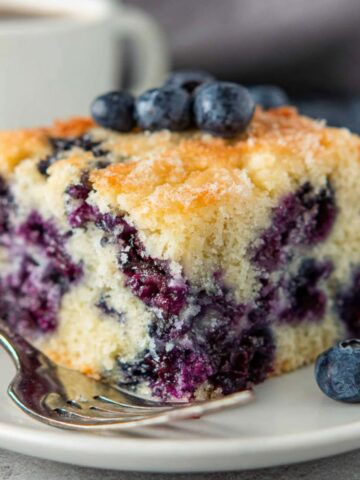

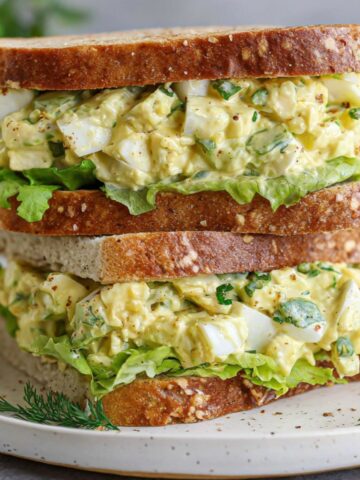
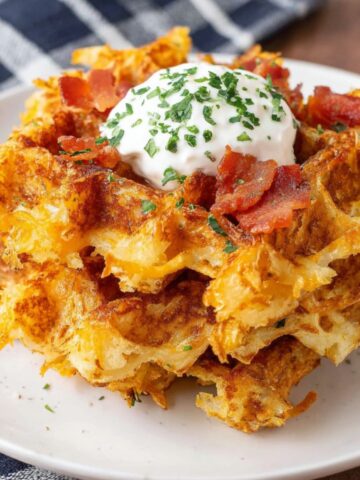



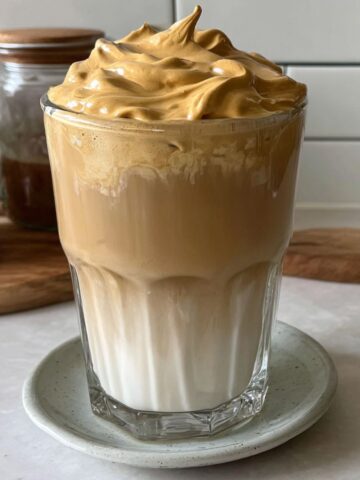

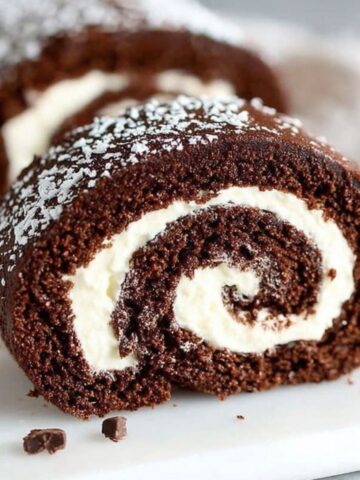

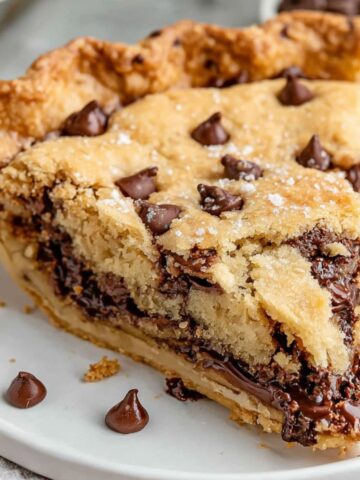
Leave a Reply